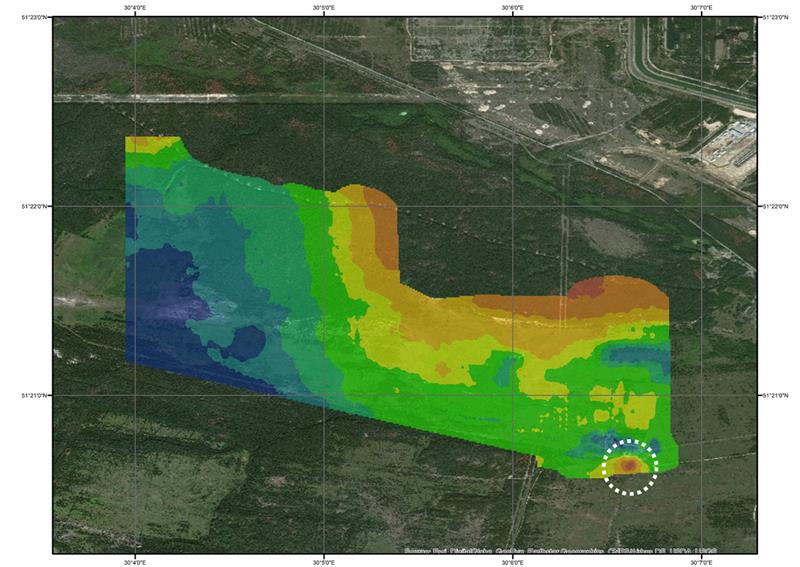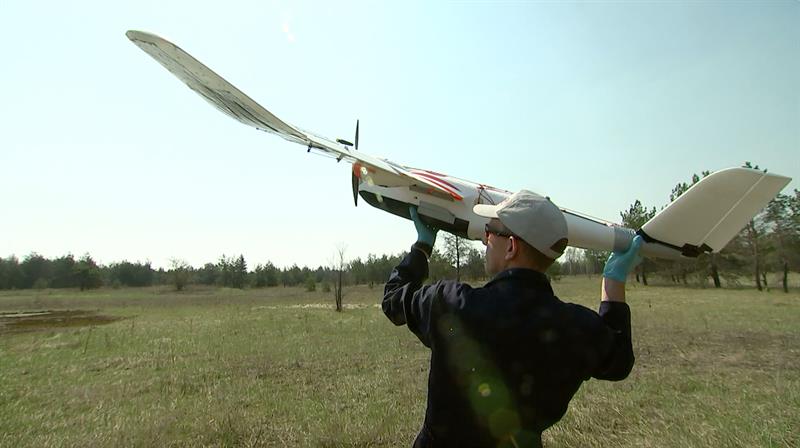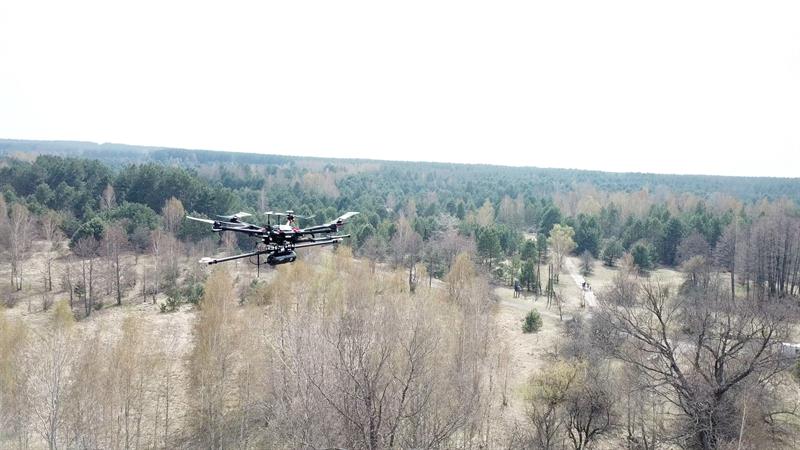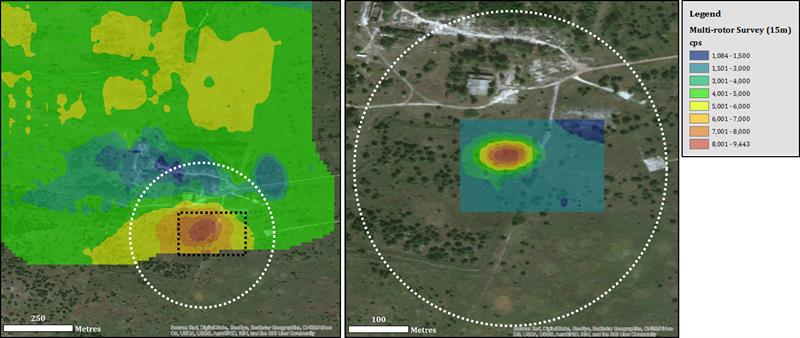The National Centre for Nuclear Robotics (NCNR) is advancing state of the art navigation, sensing, autonomy and human-machine interaction technologies as part of a world-leading programme designed to put human, societal and ethical values front and centre of Britain’s nuclear clean-up task.
The £42 million Centre is led by the University of Birmingham, based at its new Extreme Robotics Lab, in partnership with the universities of Bristol, Lancaster, Edinburgh, Essex, Lincoln, Plymouth, the University of the West of England and Queen Mary University of London.
Professor Rustam Stolkin, director of the NCNR, says: “Part of the reason why we have the legacy waste problem that a lot of other European countries don’t is because a lot of the early reactors were, sadly, for creating weapons material to go into nuclear bombs.
“But the UK pioneered the peaceful use of nuclear energy too, we built the first industrial grade civil nuclear power station for providing electricity.”
The NCNR’s co-director, Professor Tom Scott, adds: “We basically tried all the different flavours of nuclear technology that you can think of, using all the different materials you can think of. Because we were the first to do this in a race with the Americans, French and Russians, all the first reactors were basically prototypes. They weren’t designed with decommissioning or waste management in mind and so the challenges of decommissioning and waste management were an afterthought.
“It’s the same challenge as the Russians and the Americans have, they just have a bigger land area and their facilities are much more spread out. Whereas, at Sellafield everything’s pretty much on a postage stamp, all these high-hazard buildings are right next to each other, which then poses a hazard because they are right next to each other.”
In fact, Sellafield is regarded as being the most hazardous nuclear facility in the western hemisphere. This is in part because of the age of the structures there, but also because of the number of hazardous structures on such a small site. This is a problem Russia and the USA don’t have, due to their land-masses allowing them to have spread out their nuclear facilities.
Nuclear waste comprises a hugely diverse range of objects and materials, engendering a large-scale need for complex robotic manipulations. Nuclear decommissioning therefore offers a critically important market for advanced robotics research, one that is needed now, is of great societal importance, and a technology where the UK is well-placed to take a global lead.
Low-level radioactive waste is sufficiently benign that it can be cleaned up by technicians wearing cumbersome, claustrophobic air-fed suits, and up to seven pairs of protective gloves. They work in challenging environments and are constantly exposed to risk while operating powerful cutting and lifting equipment. Their protective clothing, as well as that of the three or four colleagues who clean down the suits of each technician, leads to the secondary waste paradox, whereby one technician cleaning up one barrel of nuclear waste generates 11 barrels of additional waste which go into long term storage ‘at gigantic cost to the tax payer’.
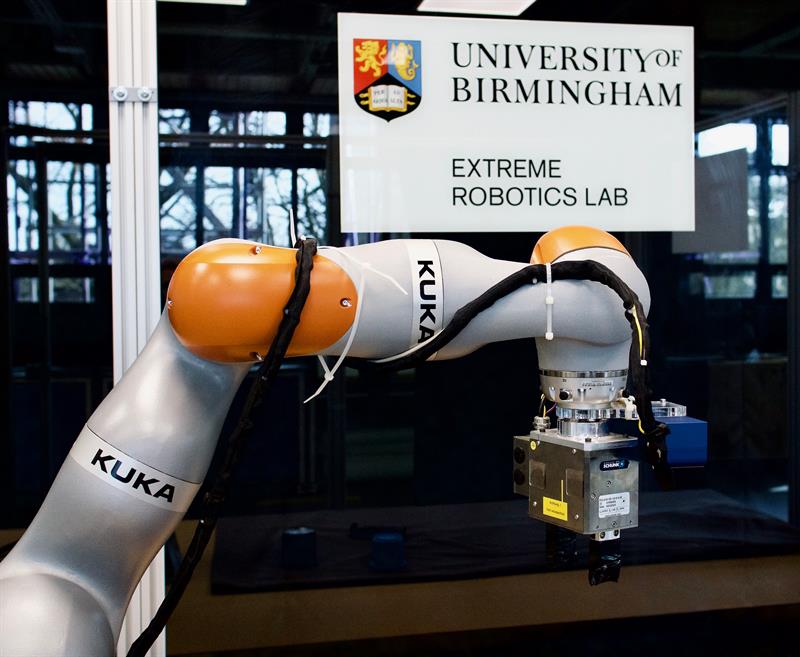
The technicians cleaning up the UK’s legacy waste will have to enter these hazardous radioactive environments an estimated one million times.
“The nuclear industry has an extraordinary safety culture,” says Prof Stolkin. “But when you do something a million times, statistically you expect things to go wrong. It’s hazardous, it’s extremely uncomfortable, the suits fill up with sweat, these people get heat exhaustion, so they can only work for two hours a day.
“We have a moral obligation to stop sending humans into these kinds of unpleasant working conditions, we don’t send children up chimneys any more, it’s not socially acceptable. We also have a duty to the environment and the tax payer to stop that secondary waste.”
On top of this, there is a large amount of waste that is so radioactive that humans can’t go near it and is currently stored behind thick concrete walls, some built nearly 70 years ago.
“The infrastructure that was put in place to house these wastes at the start of their lifetime would be best described as agricultural,” says Professor Scott. “For example, some of the siloes used to store certain medium-level waste were siloes designed to hold grain not radioactive waste. They’ve been in there since the late 1950s, so they’re very close to falling down all on their own.
“So, one of the reasons why we need these robots and technologies is where there is a very keen requirement to retrieve those legacy wastes and safely repackage them and put them into modern facilities that are designed to last 100 years or more so that we can thereby reduce the risk to the UK and European public.”
The only solution to clean up these legacy buildings is remote handling machinery of one kind or another.
“Over the past 40 years we’ve seen a robot revolution in the manufacturing industry,” explains Professor Stolkin. “It looks very high-tech, but those robots are not very smart, they’re simply making blind, pre-programmed, repetitive motions. If you replaced these objects with ones that were a slightly different shape, or if they showed up in a slightly different position, the whole system would break. The reason we’ve been able to have this revolution in manufacturing is because manufacturing is a very structured, constrained and precise environment.”
Nuclear waste comes in all shapes and sizes; therefore, the robots being developed by the NCNR must be able to deal with an almost infinite level of disorder, while also working completely autonomously as a human operating it remotely won’t have the relevant depth perception to work quickly or accurately enough.
The NCNR’s experts have attached novel vision and radiation sensors to the robotic arms that are driven by advanced machine learning algorithms and artificial intelligence (AI). They also need to work in harsh environments, and so also feature self-healing electronics. Driven by around 100,000 lines of AI code, the robots can pick out objects, plan their position, size and shape, plan where and how is best to apply a stable grasp and how to deliver it without crashing into its surroundings or other robots in the vicinity.
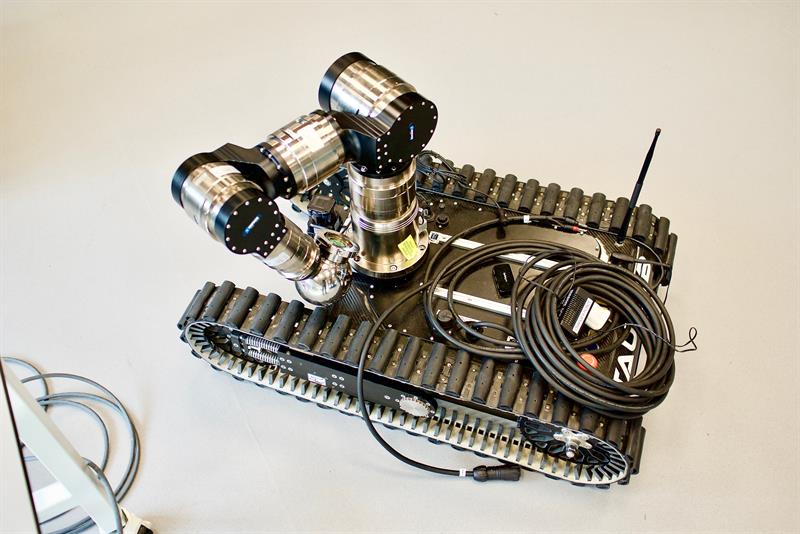
Machine learning and AI is also required for real-time mapping and navigation. Prof Stolkin says: “The robots may need to go into buildings that have been closed off since the 1950s so no one’s quite sure what’s in there.”
Another area being developed by the Queen Mary University of London’s Dr Kaspar Althoefer is ‘soft’ robots. Originally designed for use in keyhole surgery, these balloon-like robots are fitted with sensors or cameras squeezed through an aperture and inflated on the other side to map the environment behind the wall. Some can even be made rigid and can exert force if needed.
“It’s very unusual to have this combination of the absolute frontier of academic research coupled and parallel with very real hands on problem solving, you often get one without the other,” summarises Professor Stolkin. “We have this huge breadth of different technologies and different skills coming together and that interdisciplinarity is very special.
“We’re not just developing new technology, we’re focussed on developing that technology for ethical, moral, societal reasons, environmental stewardship, cleaning up the environment for future generations. I think that makes a powerful motivation for developing these technologies.”
According to Prof Stolkin, working with other industries – whose uptake of advanced technologies is faster than the more cautious nuclear industry – will mature the technologies faster. So, by the time the nuclear industry is ready to adopt them they will be at their most advanced. Plus, the more a technology is used the cheaper it becomes which makes it more attractive to implement.
The current figure of £234bn over 120 years are based on current technologies. If robots were introduced earlier, knocking a year off the prediction, this would in turn reduce the expected cost by £2bn.
Since launching 18 months ago, the National Centre for Nuclear Robotics has had over 100 peer-reviewed papers published, operated the first ever autonomous robot – of any kind – in a live nuclear environment and developed the most sophisticated material recognition system, able to identify 30 different types of plastics, which will also have applications in the domestic recycling industry.
Drones identify Chernobyl hot spots A team of British scientists has completed the most comprehensive survey yet of Chernobyl’s Red Forest – one of the most radioactive sites on Earth. Using fixed-wing and multi-rotor drones fitted with custom-built radiation detectors, the researchers created detailed 3D maps that revealed previously undetected radiation ‘hot-spots’. The two-week expedition, led by Professor Tom Scott of the NCNR, in April 2019, was the first of several survey missions that the NCNR will undertake in Ukraine over the coming 12 months. 33 years on from the catastrophic accident at the number-4 reactor, and with 70,000 tourists visiting the Chernobyl exclusion zone last year, national authorities urgently require accurate radiation maps to update safety protocols that will inform both future tourism activity and the ongoing construction of solar energy farms in the area. The NCNR was created to accelerate and reduce the cost of Britain’s nuclear clean-up task by developing state of the art robotics, sensing and AI technologies for carrying out work in complex and hazardous environments. That expertise is now being called upon internationally. Working alongside colleagues from Ukraine’s SSE “Eco Centre”, the body responsible for gathering survey and research data within the 2600 km2 Exclusion Zone, the UK team flew 50 sorties over 10 days, spending 24 hours in the air to map an area of 15 km2. Starting at the lowest risk site first, the village of Buriakivka, located 13 km from the accident epicentre, researchers then moved on to the partially-demolished settlement of Kopachi before tackling the Red Forest.
In a world first, fixed-wing drones were used to quickly map radiation over larger areas, flying at a height of 45m to 60m at a speed of around 40mph.Rotary drones were then used for more detailed investigation of key areas. The aircraft featured a unique sensor system developed jointly by Professor Scott’s team and University of Bristol spinout, Imitec Ltd. With the fixed-wing drone able to fly lower and slower than a manned survey aircraft ever could, and without risk to life, the NCNR team was able to create the most comprehensive radiation map yet of the Red Forest.
Their survey not only reaffirmed current understanding of the radiation distribution at an unprecedented spatial resolution, it revealed unexpected areas of major contamination in Kopachi. Registering a dose-rate of greater than 1 millisievert (mSv) per hour (the maximum permissible dose not requiring an individual’s classification as a Radiation Worker in the UK is 6 mSv per year), the area is believed to contain material from the original emergency clean-up activities. Professor Scott says, “We have successfully demonstrated that the UK now has the capability to monitor radioactive sites and respond to nuclear incidents without exposing humans to risk. We can fly into a contaminated area from a safe zone, perhaps 10 km away from the incident site, and gather detailed information – streaming it live during the flight before returning safely to base”. Professor Scott continues “The same technology has applications in other sectors too. For example, it could be used to identify rare earths, gold or copper mineral deposits, quickly, cheaply and non-invasively. This could be especially useful for developing nations keen to assess the extent and value of mineral resources ahead of, say, signing away mining rights.”
|


